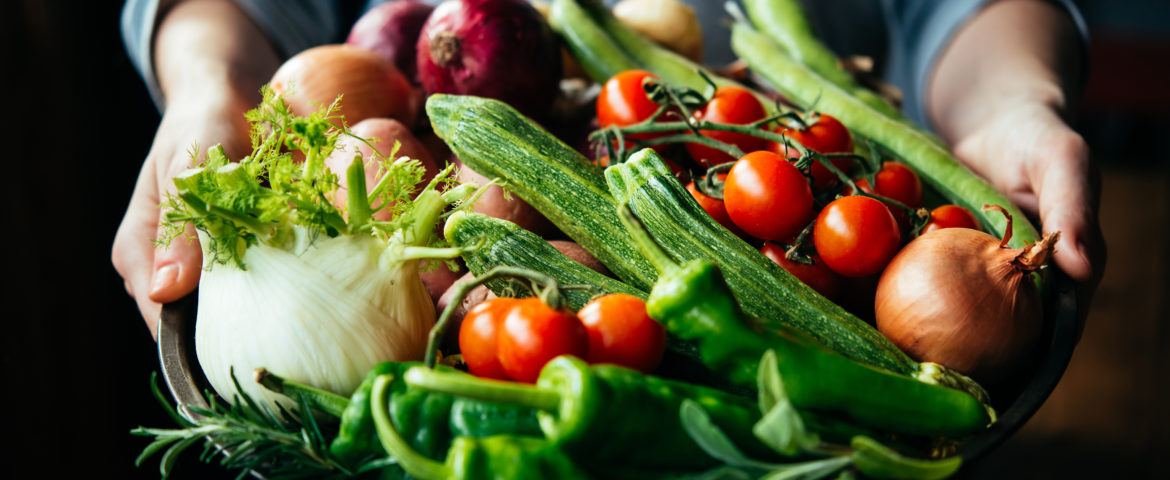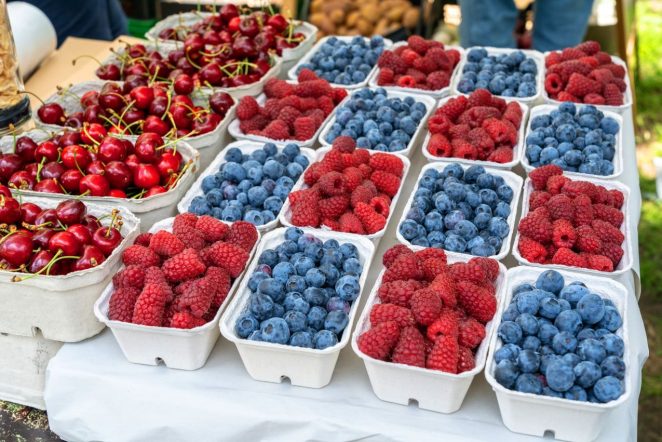By Rebecca Mason, RD
One sunny summer evening when I was younger, my mom made a beautiful salad for dinner. It was heaps of greens topped with black beans, pico de gallo, cilantro-lime dressing and fresh pineapple, and my cousin, wide-eyed and terrified, exclaimed, “What is this!? It ain’t a meal without meat!”
We all had a good laugh, but I know many Americans wholeheartedly agree with his sentiment. Recipes and meal plans often feature meat as the main event. A turkey, ham or roast is the centerpiece on a holiday table. But breaking free from the norm has numerous benefits that go beyond just simply consuming additional produce.
Here are 5 things everyone should know about going meatless.
- Meatless Monday is an initiative that was created in response to the Healthy People 2010 report, which outlines a goal of reducing dietary saturated fat in the American diet by 15 percent. Where does saturated fat come from? Meat and meat products. These are the primary contributors of saturated fat in our diets. And as luck would have it, one day is about 15 percent of the week. So for those of us who have meat or meat-based products at every meal, going meatless on Monday means you’ll consume 15 percent less saturated fat each week.
You can easily calculate your protein needs at home with this equation: your weight (in pounds) x 0.36 = daily protein needs (in grams).
- Plants have protein, too. It’s commonly believed that a plant-based diet is incapable of providing our body with the protein it needs, but this isn’t true. Foods like edamame, tempeh, tofu, lentils and beans all pack a powerful punch of protein and fiber. This combination of nutrients can help stabilize blood sugar and increase satiety. Additionally, many of us are actually consuming far more protein than we actually need.
You can easily calculate your protein needs at home with this equation: your weight (in pounds) x 0.36 = daily protein needs (in grams). Explore a variety of meatless options and serve these Tuscan Spicy Lentil Tacos for dinner tonight (and they’re great for leftovers the next day, too). - Stop worrying that you’ll miss out (on nutrients, that is). Take iron for example: We all think of beef when we want to consume more iron, but plants can provide adequate amounts of this mineral. Just one cup of cooked spinach provides 6 mg of iron (and 245 mg calcium), and one cup of cooked lentils has an impressive 7 mg of iron. With the recommended daily allowance of iron being just 8 mg for men aged 19-50, and 18 mg for women, these plant sources add up to the goal quickly. Bonus tip: add some vitamin C (like strawberries, oranges or bell peppers) to enhance absorption of this mineral.

- It’s good for you and the environment, too. Our resources, like fuel and water, are used at an exponentially greater rate to produce one pound of beef versus one pound of vegetables. Additionally, according to an article published in the Journal of Clinical Nutrition, meat production generates far greater greenhouse gases than production of vegetables. Production of one kg beef was found to produce 30 kg of greenhouse gases, while vegetables ranged from .42-1.3 kg greenhouse gases per kilogram of food. We all show the environment a little love, and reduce our carbon footprint, every time we choose a plant-based meal.
You’ll save close to six dollars for one meal, or over $300 in a year, and that’s just by making changes to dinner one night a week.
- Save some green. A pound of sirloin will cost you about $6.99 per pound. Serve everyone a four ounce steak, add a baked potato and a side of broccoli, and you are looking at a meal for your family of four that costs over 12 dollars. Go ahead and swap out your classic steak meal for this Spaghetti Aglio E Olio with Kale with whole wheat noodles. You’ll save close to six dollars for one meal, or over $300 in a year, and that’s just by making changes to dinner one night a week.
The possibilities for making a meatless meal are endless with today’s abundance of dietitian and food blogs. Start getting creative for how you can turn just one meal a week into a meatless meal. Your body won’t be the only one thanking you, but the environment will be, too.
About the Author: Rebecca Mason, RD, is a registered dietitian and Health and Wellness Coordinator. She is passionate about helping families and individuals improve their health through nutrition education and nutritious food access. Rebecca is certified in adult weight management, and has a background in both clinical nutrition and wellness programming.


